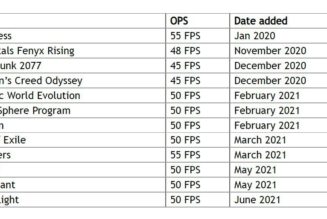If the camera is using an infrared light, your phone can pick up what your eyes can’t.
:format(webp)/cdn.vox-cdn.com/uploads/chorus_asset/file/23952362/HT020_securityPrivacy_0003.jpg)
To quote a worn — but occasionally true — saying from Joseph Heller’s novel Catch-22, “Just because you’re paranoid doesn’t mean they aren’t after you.” The popularity of Airbnb and other informal rentals has coincided with the increased production of cheaper hidden cameras, making it increasingly likely that your stay could be viewed by the person who rented the place out to you.
Want to make sure your privacy is being respected? There are a couple of ways you can kinda, sorta find out if there are any hidden cameras in your space.
a:hover]:shadow-highlight-franklin [&>a]:shadow-underline-black dark:[&>a:hover]:shadow-highlight-franklin dark:[&>a]:shadow-underline-white md:text-30″>Use your phone to find an IR-equipped camera
:format(webp)/cdn.vox-cdn.com/uploads/chorus_asset/file/24357592/236485_find_hidden_cameras_BKrasnoff_0001.jpg)
If a camera wants to catch movement or take photos in low-light or dark rooms, it will usually use infrared (IR) light, which human eyes can’t detect. However, even if you can’t see the IR light emitted by the camera, the sensor on your smartphone camera should be able to. In some phones, it’s only the front-facing camera that can catch IR light; in others, such as my Pixel 6, it will work with both the front- and rear-facing cameras.
If you want to try it out, you should first check to see if and how your phone finds IR signals by using a TV or other remote:
- Turn on your phone’s camera and aim it at the remote.
- Turn on the remote and look for a small light, either steady or flashing. (It will probably look sort of purplish-pink, although I’ve seen it reported as purplish-blue.)
- If you’ve tried this with your back-facing camera and didn’t see the small light, try it with your forward-facing camera.
Got it? Okay, now all you have to do to check for an IR-equipped camera is make the room as dark as possible (so that if there is a camera, the IR will be triggered), and then slowly scan the room with your phone. If there is an active camera with IR lighting, you should be able to find it.
a:hover]:shadow-highlight-franklin [&>a]:shadow-underline-black dark:[&>a:hover]:shadow-highlight-franklin dark:[&>a]:shadow-underline-white md:text-30″>Check your network
:format(webp)/cdn.vox-cdn.com/uploads/chorus_asset/file/24355666/Screenshot_20230112_153723.png)
If you are wondering whether there is an active camera in your room and the IR trick doesn’t work (either because there is no camera or the camera isn’t equipped with IR), then another way you can possibly find an active device is to check what else is connected to the local network.
There are a number of network analyzer apps out there that can find what devices are connected to your local network. I tried one called Fing (which is available for both Android and iOS), but there are several useful ones available. These apps can find and list all of the devices that are on your network; they can also let you confirm which devices you recognize so that you can more easily find any that are not supposed to be there.
Neither of these is foolproof, of course — they are just possible methods for you to try. (And it is sort of fun playing with the IR detection features on your phone.) If you’re seriously concerned, you can go out and purchase a radio frequency (RF) detector, which should pick up any signals coming from hidden microphones or cameras.









